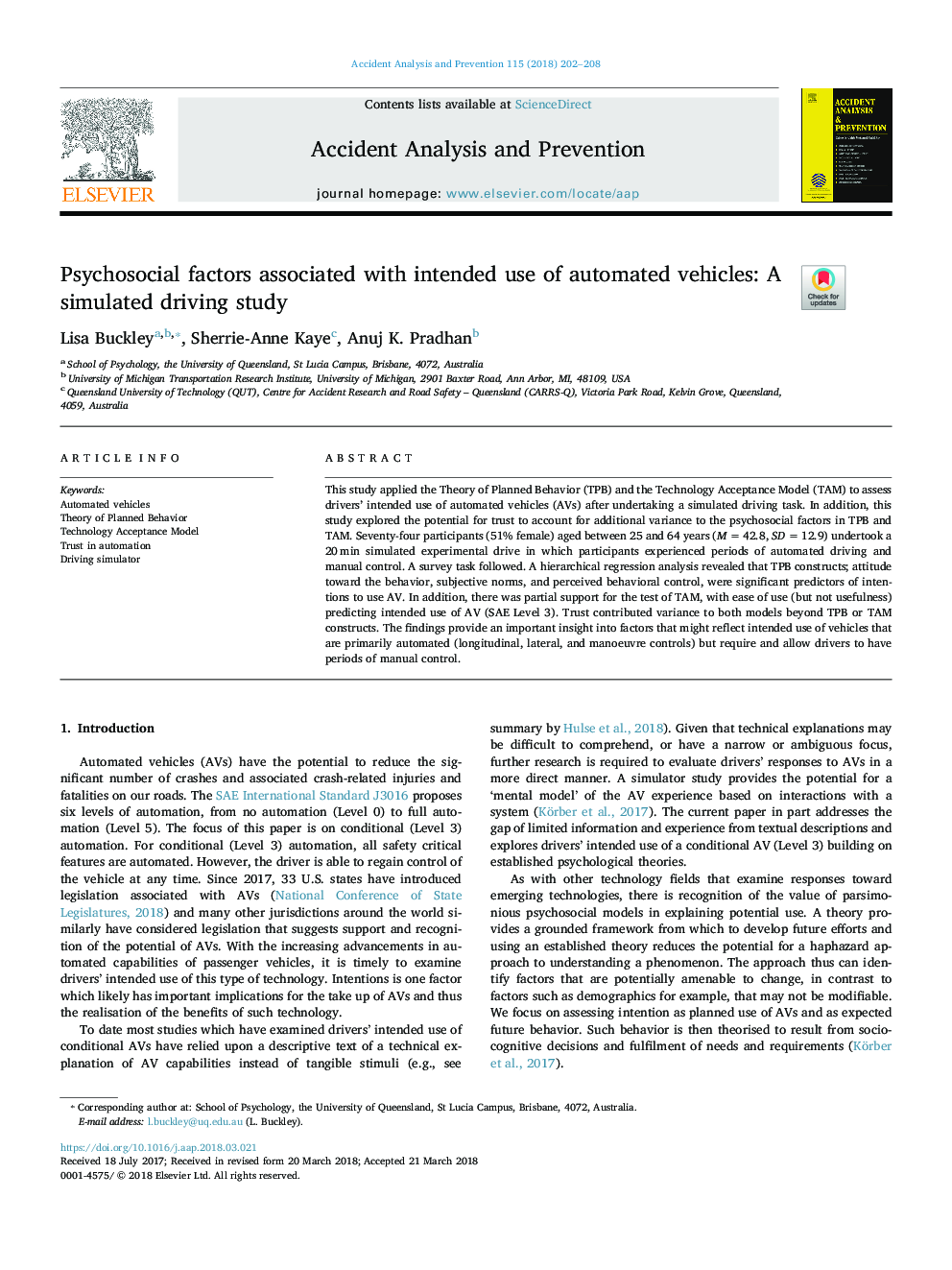| Article ID | Journal | Published Year | Pages | File Type |
|---|---|---|---|---|
| 6965173 | Accident Analysis & Prevention | 2018 | 7 Pages |
Abstract
This study applied the Theory of Planned Behavior (TPB) and the Technology Acceptance Model (TAM) to assess drivers' intended use of automated vehicles (AVs) after undertaking a simulated driving task. In addition, this study explored the potential for trust to account for additional variance to the psychosocial factors in TPB and TAM. Seventy-four participants (51% female) aged between 25 and 64 years (Mâ¯=â¯42.8, SDâ¯=â¯12.9) undertook a 20â¯min simulated experimental drive in which participants experienced periods of automated driving and manual control. A survey task followed. A hierarchical regression analysis revealed that TPB constructs; attitude toward the behavior, subjective norms, and perceived behavioral control, were significant predictors of intentions to use AV. In addition, there was partial support for the test of TAM, with ease of use (but not usefulness) predicting intended use of AV (SAE Level 3). Trust contributed variance to both models beyond TPB or TAM constructs. The findings provide an important insight into factors that might reflect intended use of vehicles that are primarily automated (longitudinal, lateral, and manoeuvre controls) but require and allow drivers to have periods of manual control.
Keywords
Related Topics
Physical Sciences and Engineering
Chemical Engineering
Chemical Health and Safety
Authors
Lisa Buckley, Sherrie-Anne Kaye, Anuj K. Pradhan,
